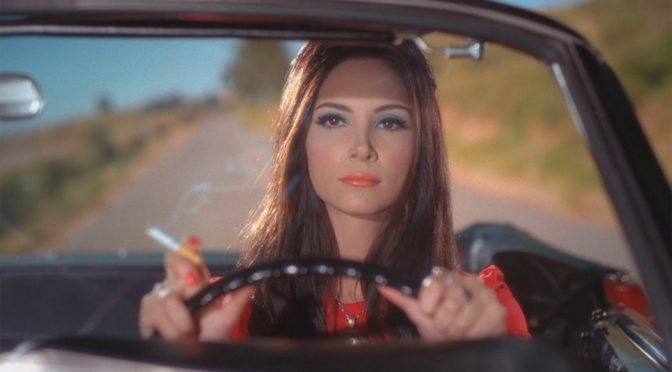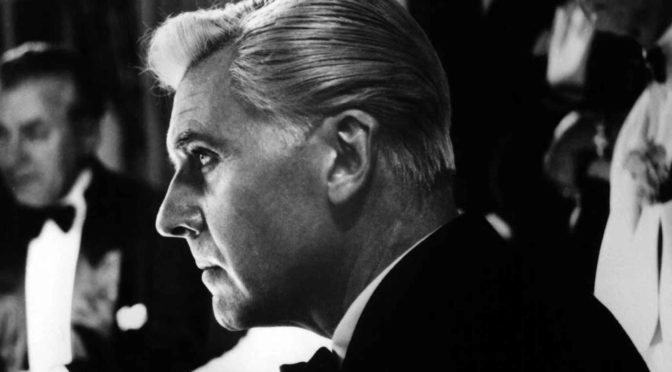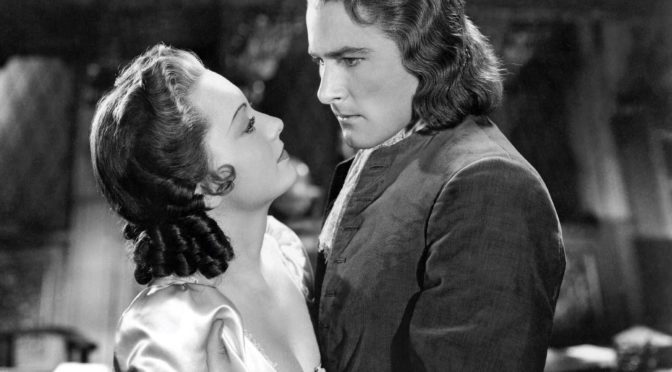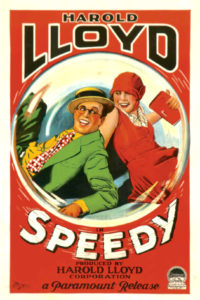March wound up being a lackluster month overall for personal moviewatching quantity, but not necessarily quality, as life and work seemed to intervene in normal viewing time. I finished strong, taking advantage of some Spring Break time (aka, the let’s-flee-home-renovations trip to the sister-in-law’s) to catch up. First-Watch Club March of 2018 offers a wide variety of cinema spanning 106 years.
Since the April edition will likely be dominated by TCM Film Festival offerings, this one will be the last whole-grain, non-homogenized, organic First Watch Club, untarnished by the glow and spectacle of Los Angeles and the TCM Film Festival, for some time. Next month I’ll still be sleep deprived and basking in the warm glow from a trip to Los Angeles. The kind of glow one can only achieve, however, by spending 16 hours per day inside a movie theater.
First-Watch Cinema Club: March 2018
#5. Frankenstein (S. Searle Dawley, 1910)
 I stumbled onto the first adaptation of Mary Shelley’s novel as I researched clips on early silent serials for a forthcoming article in Action-a-Go-Go. Instead of a proper two- or three-paragraph blurb, I’ll mix this up and include my solo, impromptu live tweet commentary because it will better capture my surprise and enthusiasm for the film.
I stumbled onto the first adaptation of Mary Shelley’s novel as I researched clips on early silent serials for a forthcoming article in Action-a-Go-Go. Instead of a proper two- or three-paragraph blurb, I’ll mix this up and include my solo, impromptu live tweet commentary because it will better capture my surprise and enthusiasm for the film.
So the creation of Frankenstein’s monster was actually a pretty cool effect. This figure was set on fire and then edited into sequence in reverse. The flames give away the trick, but visually interesting nonetheless. #Frankenstein1910
I’m pretty sure Dr. Frankenstein called his monster “Gene Simmons” but I have no support for this theory other than this image. #Frankenstein1910
Okay, #Frankenstein1910, that was a really cool ending. The monster sees himself in the mirror, flies into a fit of rage and then disappears, except for his image in the mirror. Dr. Frankenstein enters and the image of the Dr. syncs with the image of the monster in the mirror.
This concludes my #Frankenstein1910 broadcast day. I really do need to get back to research. If you’d like to view FRANKENSTEIN (1910) dir. J. Searle Dawley for the Edison Company, here’s the link:
#4. Somewhere in Time (Jeannot Szwarc, 1980)
 The narrative simplicity creates an unusually proximate intimacy with our time-crossed lovers. That something as minimal as a character staring into the eyes of a photograph has the ability to orchestrate a crescendo of emotion speaks volumes about the potential power of the film.
The narrative simplicity creates an unusually proximate intimacy with our time-crossed lovers. That something as minimal as a character staring into the eyes of a photograph has the ability to orchestrate a crescendo of emotion speaks volumes about the potential power of the film.
I say “potential” because you must give this film access to the emotions. Skeptics will find it hokey or schmaltzy — and in truth, it is both of those things in some measure, with a little bit of TV-movie atmosphere mixed in.
Time travel undertaken with the least amount of exposition. Convince yourself you’re in a certain place and a certain time. And it works because you’re not forced to question any brand of pseudo-scientific gobbledygook. Suspension of disbelief becomes an emotional leap rather than rational acceptance.
Despite the brief runtime of the film, the viewer and our protagonist — Christopher Reeve in a wonderful performance — experience a swell of emotion in step. So when it all comes crashing down, we’re also invested in this perfect, timeless romance. Who wouldn’t be madly in love with 1980’s Jane Seymour?
Somewhere in Time works because the value of this movie lies in the spaces between the unusual narrative beats. It’s about getting swept up in a believable romance despite the impossibility of time and distance.
Much respect to Scott Weinberg and Drew McWeeny for calling attention to this film on their wonderful 80s All Over podcast.
Somewhere in Time is available on DVD.
#3. The Love Witch (Anna Biller, 2016)
 I love that this movie exists more than I love this movie. But my love of the movie also supersedes my individual caveats with the execution.
I love that this movie exists more than I love this movie. But my love of the movie also supersedes my individual caveats with the execution.
The film is overlong and occasionally too blunt. It’s in need of an editor that isn’t the director. My criticisms, however, don’t do justice to the individual accomplishment of director Anna Biller.
The Love Witch is a perfect homage to low-budget films of the late 1960s/early 1970’s. Is she borrowing from exploitation? Horror? It’s really hard to say. (I know much has been made about critics misunderstanding filmmaker intent.) At the same time, however, calling this “homage” would be selling the film short. It exists in that world. It breathes that same air. And don’t you dare call it camp, because camp is ribald and often referential mockery.
This is an important, living, breathing, clearly personal and sincere film about women’s aspirations, fears and desires. About the dual stations of projected perfect womanhood and private sensuality.
The male gaze does not knowingly want to be called out by a woman in control of her sexuality. Once this character takes control, once she asserts a measure of dominance over a man — he becomes either hopelessly infatuated or tries to burn her at the stake. The clear-eyed observations that comprise the emotional core of the film make this an essential work about gender dynamics for the times in which we live.
The Love Witch is available on Blu-ray.
#2. The Best Little Whorehouse in Texas (Colin Higgins, 1982)
 Hinges on Charles Durning’s beautifully comic “Sidestep” number. For a man of his size, he moved like a jungle cat.
Hinges on Charles Durning’s beautifully comic “Sidestep” number. For a man of his size, he moved like a jungle cat.
Burt Reynolds and Dolly Parton (aka national goddamn treasures) flash their charismatic best in this “how the hell did this get made” Hollywood musical. Seriously. How did a big budget musical about the benefits of prostitution get a green light? When Dolly Parton and Burt Reynolds laugh at the same time, you’ll suddenly think everything is right in the world.
I love the 80’s.
Gonzo mainstream cinema is an odd duck, and this should be one of the greats of the genre, but it just doesn’t get the kind of positive attention it deserves.
Part of me wonders if Whitney Houston’s “I Will Always Love You” would have been the same massive chart-topper if the general populace had known that it was originally written about a madam singing to the local sheriff who had closed down her brothel.
The Best Little Whorehouse in Texas is available on Blu-ray.
#1. Stop Making Sense (Jonathan Demme, 1984)
 Long time concert film appreciator, first time lover.
Long time concert film appreciator, first time lover.
In practice, the concert film should reveal something new about the band that wouldn’t be readily accessible to the average fan. There’s value in having the “best seat in the house” but that’s less a “film” than a concert on film. Important difference.
As a long time Talking Heads obsessive, I inexplicably never made the effort to watch Stop Making Sense. I never believed a concert film could transcend the genre. It’s not that I didn’t want to watch — “I just never got around to it.” Thank goodness I have Cinema Shame to guilt me into these first-time watches.
Demme’s Stop Making Sense became the first of my Shame conquests that I can’t comprehend not having had in my life. The film straddles the line between David Byrne performance art and music video. It’s the perfect distillation of Talking Heads-ness eccentricities and musicality.
I can’t count the number of times I’ve spun my vinyl or the expanded CD version of this soundtrack. This music has been in my blood for as long as I can remember, but now I finally feel as if I’ve heard the record for the first time.





 Melville is tone and atmosphere. Bob le Flambeur, likewise, is all tone and atmosphere.
Melville is tone and atmosphere. Bob le Flambeur, likewise, is all tone and atmosphere.




 #2. Speedy (1928)
#2. Speedy (1928)